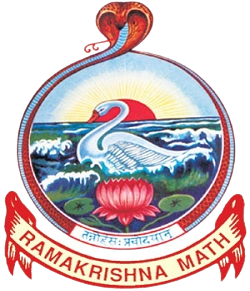About Us
Vivekananda Ashrama Shyamlatal (Himalayas)Beginning
Beginning of Vivekananda Ashrama at Shyamlatal is the fruition of intense desire of Shrimat Swami Virajanandaji Maharaj to practice life of intense meditation.Swami Virajananda joined Baranagar Monastery in1891 and got mantra diskha from Holy mother in 1893 .He was ordained into sannyasa by Swami Vivekananda in 1897. He was one of the first four disciples of Swami Vivekananda. In 1899 he was posted at Mayawati Advaita Ashrama to assist Swami Swarupananda in publication of monthly magazine Prabudhha Bharata.After Swami Swarupananda’s passing away in 1906 Virajananda became president of Mayawati Ashrama.
Between 1906 to the end of 1914 he worked very hard and published the complete works of Swami Vivekananda. He had partly completed the life history of Swami Vivekananda. This extensive and laborious hardwork brought fatigue on him and his inner spirit urged him to plunge into contemplative life. Though senior swamis of the Order persuaded him not to take such adecision of leading an exclusive meditative life for the rest of his life, the swami remained firm in his resolution and came to a place called Jole near village Shyanla.
Mother Sevier, a disciple of Swami Vivekananda, who along with her husband had started the Advatia Ashrama at Mayawati; was very much in sympathy with this young swami and had loving concern about his needs like a mother. When she came to know that the swami is staying at Jole in a small hut she came to take firsthand information about the needs of the swami. She found that water source is far away from the hut and it will be a daily labour to bring water from 300 hundred feet down the hill and so she disapproved the spot. Incidentally at that time Mr. Harsing, Pradhan of village Shyanla came to the swami and expressed his willingness to sale his dilapidated house at a nominal cost.Further he said that there is a water source near the house. Acting on his proposal
Mother Sevier and Swami Virajananda came to a village Shyanla and found the place most convenient for contemplative life. The scenic beauty of the place charmed them. The place was located at the base of mountain slope . Three hundred feet below was abeautiful lake. On one side one could see the snow clad mountain peaks of Nanda Kot, and Panchal Chully, and on other side there was a valley full of dense forest.The River Kali flowed at the base of valley, and beyond it there stretched a vast plain land extending up to horizon. The pristine beauty of the atmospherespontaneously stillsobserver’smind, shifting it from the manifoldness of creation to oneness, inducing a contemplative mood. Everyone was delighted to see the suitability of the place for contemplative life and they unanimously took the decision to purchase the house and land. The deal was settled for Rs. 700 and registration was done at Champawat on 8th November 1914.
Initial difficulties and struggles
Brahmacha Sitaraman from Mayawati ashrama, who was very much devoted to the swami, came to assist him in all works like construction, household works, gardeningetc. He also helped him in editing the biography of Swamiji.
While the construction work was going on a steel bag of the swami got stolen and he lost Rs 300. Again Mother Sevier came to his rescue and supplied the needed funds.
By the end of 1914 Swami Virajananda had finished editing 3rd volume of Swamiji’s biography.
On the last day of year 1914 he recorded these thoughts in his journal.
“Goodbye, old year, in which I have gained much experience, received may favors, finished editing Swamiji’ life(Volume III) and building my ashrama at Shyamlatal.The year has been busy with me. I have done my best and do not regret anything. Let the new year be as full as this and see the completion of Swami Vivekananda’s life(Volume IV),completion of my Ashrama, completion of my responsibilities in Mayawati and beginning of a new life of peaceful and ardentmeditation, seeking for the Highest. May the Paramatman help me now and ever.Hari Om Tat Sat.”
While the construction work was going on Swami Virajananda observed the birthday of Swami Vivekananda and Sri Ramakrishna and held a feast for the masons, labourers and villagers, and felt satisfaction of serving God in man.
By late spring in 1915 the construction has reached completion.Mother Sevier had promised Swami Virajananda that she would come to Shyamlatal and stay there for few months before she leaving for the west. The time of her visit had come.
May 21st 1915, an auspicious day, was selected for dedication of the completed building. On the morning to that memorable day Mother Sevier arrived at Shyamlatal . After night fall, from 10 p.m until midnight a special worship including the sacred Homa was duly performed on the floor of the building.
Following these holy services the structure was christened ‘Vivekananda Ashrama’by Mother Sevier, and well after midnight all received Prasad.141
The house was aptly named as Sevier Dham.
Swami Virajananda also gave new name to village Shyanla .It is henceforth called as Shyamla Tal –Green lake.
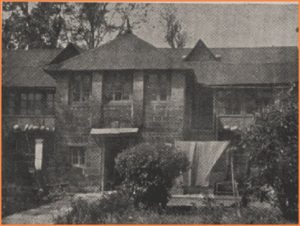
All the activities of the Ashram are undertaken in the spirit of worship which has been expressed by Swami Vivekananda as follows:”This is the gist of all worship: to be pure and to do good to others. He who sees Shiva (god) in the poor, in the weak and the diseased, really worships Shiva.” The motto and aim of the Centre is identical with that of the parent body, the Ramakrishna Math.
After consecration ceremony, Mother Sevier stayed for few months in the tranquil atmosphere of the Ashrama. Virajananda would often go with Mother Sevier to visit the tiny hamlets on the lake below the Ashrama. Delighted with the guileless conduct of the villagers the Mother would
often distribute money amongst their children. During this time Swami Virajananda and Mother Sevier visited famous holy shrine ofDivine Mother at Purna Giri.
As Mother Sevier wanted to go back to England, she visited Belur math along with Virajananda and came to Bombay to launch her journey in April 1916. In 1930 when she was 83 years old, she left her mortal body and became one with the divine peace.After establishing Mayawati Ashrama sheconstantly helped swami Virajananda in developing Shyamlatal Ashrama and it is doubtful if the Ashrama would have ever come into existence without her encouragement and help.A tribute from Ramakrishna Mission to this great lady and other western disciples of Swamiji can be best expressed in the words of Swami Premananda.In a letter he wrote to Swami Virajananda, he says “Our ‘mother’—I mean Mrs. Sevier –is an example of superb renunciation.Her husband, too, was of the same type. I remember Goodwin — Swamiji’ s Ganesha –and Nivedita.What an exquisite ideal of self-sacrifice they showed. To tellyou the truth, the day when I have to perform worship intheshrine, I offer flowers in their memory… I am a humble servant of these disciples of Swamiji.”
During the first half of 1917, Brahmacharin Naren later swami Mahananda, joined the Ashrama at Shyamlatal. He was blessed by the Holy Mother. For 14 years he devotedly served Virajanandaji Maharaj. Maharaj would often praise his capacity for arduous work. In 1931 he passed away in the ashrama.
In 1918 Swami Virajananda could bring the fourth volume of biography of Swamiji. Having finished this stupendous project Swami Virajananda decided to take a pilgrimage to South India and so leaving the responsibility of ashrama in the hands of Naren he left Shyamlatal in October 1918.
The swami travelled extensively in south India and visited many holy temples and places of pilgrimage besides different centers of Ramakrishna Mission. Finally he arrived at Shyamlatal on 21stMarch 1919.
Reaching Shyamlatal he discovered that all servants and helpers have disappeared leaving Naren alone in the Ashrama. Naren loyally continued to work with immense fervour, but after a few months he also became exhausted and begged a vacation from his heavy duties, which Virajananda readily granted. Duringthe absence of Naren, Virajananda was alone at Shyamlatal and had to do all household work, looking after the garden and entertaining guests if they happen to pass through Shyamlatal on their way to Mayawati. The hospitality of Virajananda would overwhelm them, for he himself would prepare special delicacies and serve thempersonally.
Household work and contemplative life went together for Swami Virajananda till November 1921 when he went to Belur Math to attend trustees meeting.Many matters of great importance were brought for discussion.Attending Sri Ramakrishna’s birthday Virajananda again came to Shyamlatal in 1922 .The inmates of Shyamlatal at that time consisted only of Virajananda and two Brahmacharins.Again he plunged into intense spiritual practices. All inmates worked hard and while devoting themselves to spiritual practices,participated in activities of the ashrama also.
There was a bunglow closed to the ashrama and was owned by Mr. Broke. He expressed his desire to sell it to Virajananda along with some nearby land at nominal price. This isolated building situated a short distance from the main Ashrama was ideal for spiritual practice. Seizing this opportunity Virajananda made a quick purchase for Rs 1300.There was one large central room and two small rooms on either side. After taking possession Virajananda used to spend much of his time inmeditation in the central room .
In 1940 an upper storey was added to the bungalow and from that time on Virajananda lived there alone whenever he went to Shyamlatal.
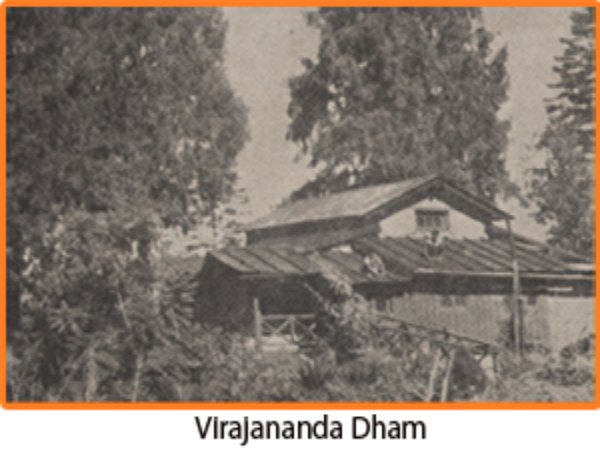
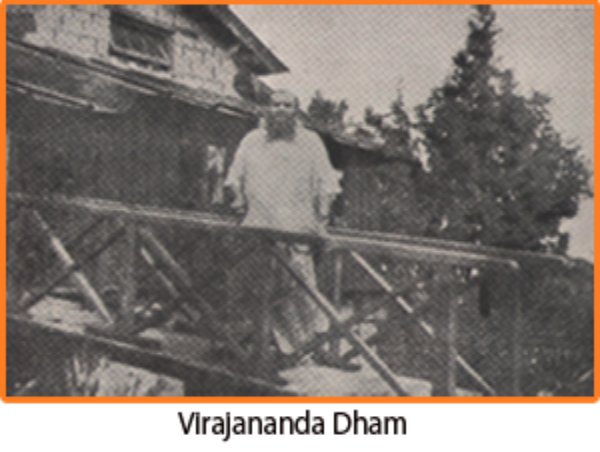
Initial difficulties and struggles
From his first days in Shyamlatal, hill-folk from the surrounding villages had sought healing from Virajananda and, despite his frequent protests that he knew nothing of the medical science, theyhad at all-time refuse to believe this. To meet their need he had resorted to use of indigenous medicines, otherwisethese humble people simply refused to leave him. From these modest beginnings dispensary and hospital gradually came into being. The plight of these hill people regarding medical aid at that time can be best understood form the annual report of 1928.There was no medical facility in the span of 90 kms of area between Champawat and Tanakpur. Extreme helplessness and urgency of the demands of suffering people was obvious. Though Virajananda wanted to live a life of exclusion and intense contemplation, it was impossible for him to remain aloof to the predicament of the people. So right from the beginning of the Ashrama in 1915, though in humble way, the dispensary and hospital activity was started under the name Ramakrishna Sevashrama. People had great confidence in the medicines
administered by the hands of a Sadhu. Patients would come from a long distance undertaking a full day’s journey. People would often carry them on their shoulders in Dooli and being unused to drugs they would recover from serious types of aliments with the astonishing quickness. Moreover, the Sevashrama beinglocated near the trade –route between Tibet and plains many Bhutias and members of other communities falling ill in the jungles and finding themselves helpless in a strange country would come to the Ashrama for relief. Not only the medicines but diet was also supplied to them.
It is surprising to note that Virajananda could manage to maintain a qualified doctor in those days. Eventually a resident monk trained in medicine was assigned to supervise
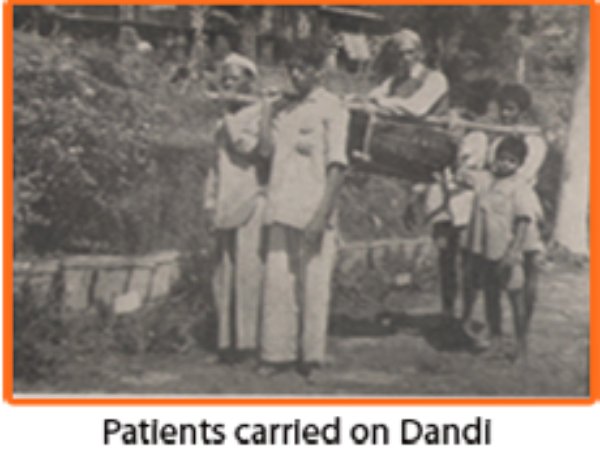
the hospital and to render medical services. Gradually as the years rolled on thenumber of patients went on increasing and a need for having a separate building for dispensary and hospital was felt imperative.Accordingly Swami Virajananda purchased 6
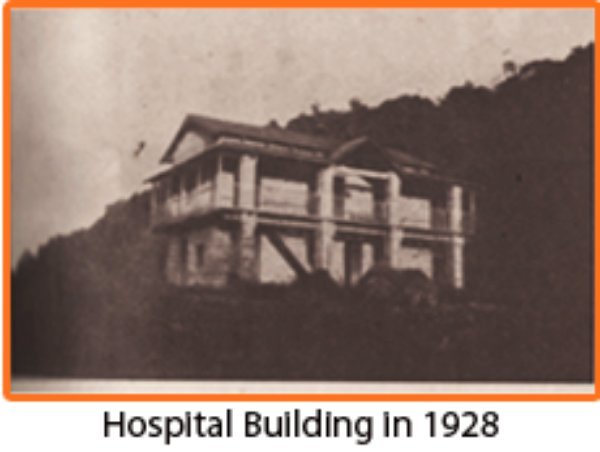
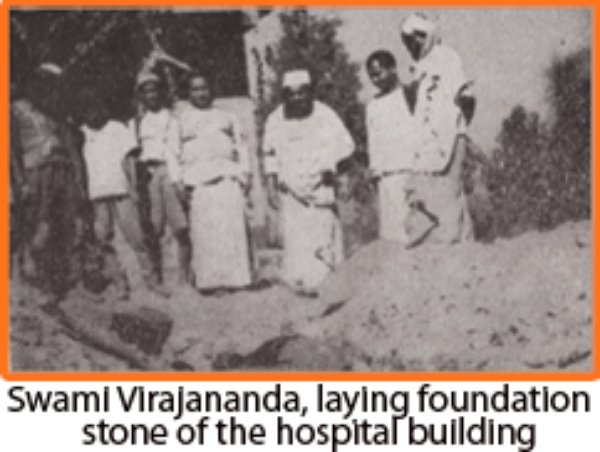
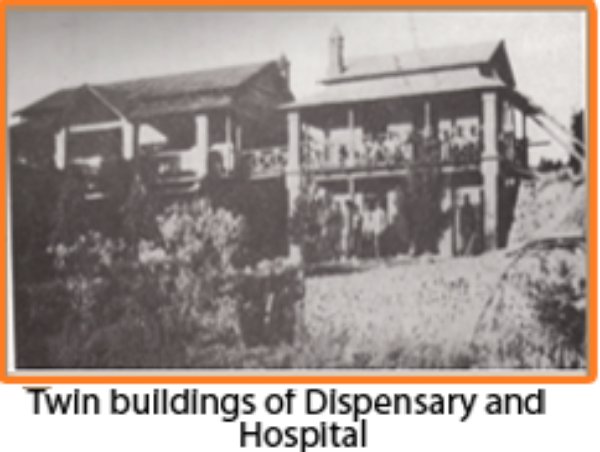
The lowest estimate was contemplated to be Rs.2800. In 1930 a spacious and well ventilated two storied house was built. Total no of patients treated from Nov 1914 to 1928, 14 years, was 9026 ( fourteenth annual report 1928) Initially the accommodation was for only 6 patients but because of increased number of patients it proved insufficient and so construction of new ward for 6 more patients was undertaken with the help of kind donations of Rs 1500 from Parsi devotees. Behind the main building of the hospital a separate kitchen house was constructed for the attendants of the patients.
Upper Primary school and Boarding
In order to propagate the education in this remote area Ashrama started upper primary school, along with boarding facility for the hill folk.In annual report of 1928, Swami Virajananda mentions that the school was re- opened at the end of June 1928, with 16 boys on the roll, including 3 boarders.The District Board of Almora donated Rs 40 to appoint a pundit for the purpose ofeducation But backward condition of the hill-people was so appalling that the parents would prefer to send their children to the fields or take out their cattle for grazing.Inspite of the earnest efforts to persuade the parents to send their boys to the school the number of boys dwindle from 16 to 4 at the end of session and so it was decided to close the school in that year. All efforts were made to create interest in education among the hill children. Swami Apurvananda held regular classes to teach some little boys of the villagers Hindi, English and Arithmetic .Books and stationaries were also provided.(Annual report of 1938)
Upper Primary school and Boarding
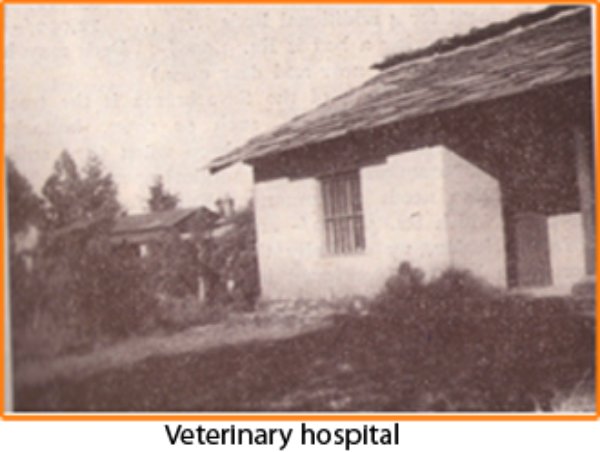
Treatment to the dumb animals such as cows, bullocks and buffaloes was started in 1939.Total no of cattle treated in that year was320. Subsequently, a new veterinary ward was constructed. The working doctor underwent training and got qualified for the purpose.Subsequently this department earned a good reputation and every year more that thousand animals received treatment.
Transitional period (1926-1938) —Call of Sangha to shoulder higher administrative responsibilities
After a history making Convention of Ramakrishna Mission in 1926 Swami Saradananda, the general secretary, formed a working committee of 12 monastic members and swami Virajananda being the most senior and capable amongst them was entrusted with a post of Secretary. In 1929 he was appointed to take charge of the Ramakrishna Math at Baghbazar (Udbodhan House) and of the Sister Nivedita’sschool. In addition to it, in 1930 he acted as a provisional General Secretary of the order. Relived from these responsibilities, he came back to Shyamlatal in Nov 1931. However after the passing away of Swami Shivananda on 29th February 1934, Swami Akhandananda became the president of the Order and Swami Virajananda became General Secretary. . In 1936 the centenary of the birth of Sri Ramakrishna was observed throughout the year. In 1937 Swami Akhandananda left his body and Swami Vijnanananda became the president of the Order.In between for a few months Virajanandaagain came to Shyamlatal. On 14th January 1938 new temple of Shri Ramakrishna at Belur math was consecrated. Soon after this Swami Vijnanananda gave up his body at Allahabad and Swami Shuddhananda became the president of the Order. However he lived only for few months and Swami Virajananda though reluctantl, had to accept the presidentship of the order—(Nov 1938) During this period,from 1926 to 1938 he according to the situation stayed at Belur Math or at Shyamlatal but, the latter was his preferred choice.
Onward March
History of Shyamlatal is the history of practical demonstration of how an intense meditative life can be coupled with self-less service, serving God in man. The ego is effaced through surrender, payer and analysis by inward process of meditation and is practically put into practice by outward process of selfless service.
Subsequent developments
1. Dispensary
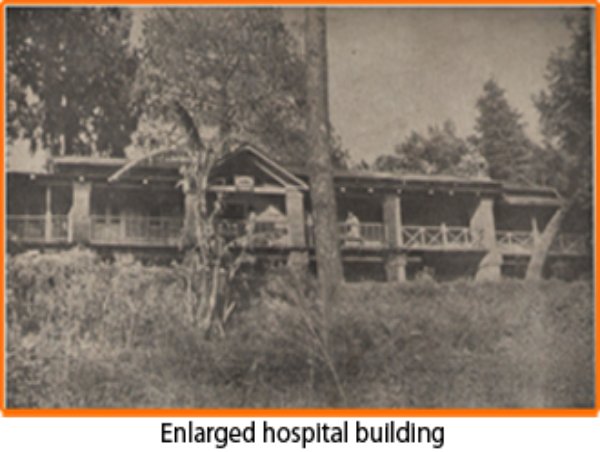
The dispensary started by Swami Virajananda in 1915, through the efforts of the succeeding swamis kept on growing steadily providing sustained and uninterrupted services to the vast locality. Slowly an Operation theater came into existence with all modern surgical instruments. The twin adjacent buildings were fused into one to provide greater accommodation.
2. Shrine
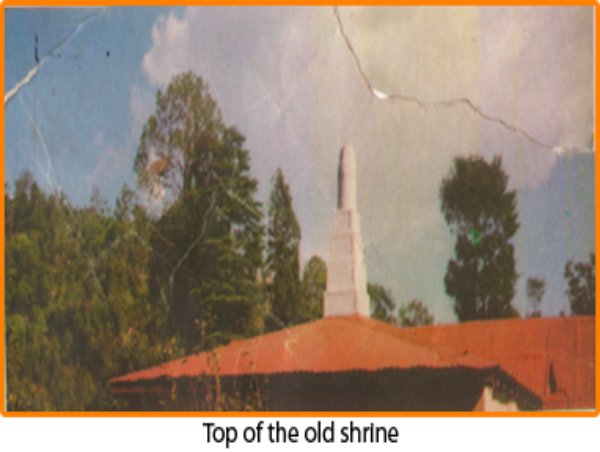
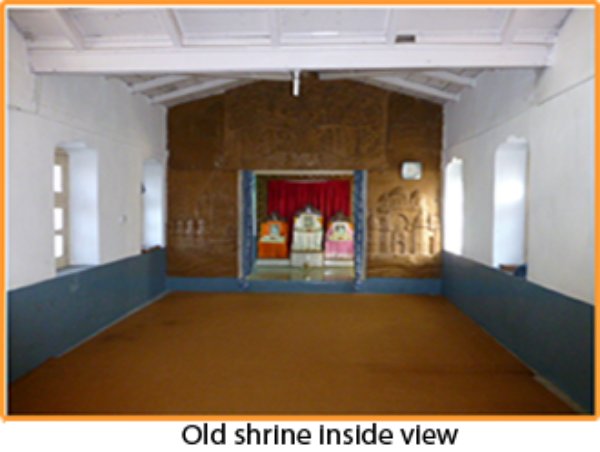
In June 1945 the pictures of Sri Ramakrishna,Sri Sarada Devi and Swami Vivekananda were installed in a newly built shrine.Newly built shrine was constructed behind the main building of the Ashrama having entrance within the main building. In June 1945 the pictures of Sri Ramakrishna,Sri Sarada Devi and Swami Vivekananda were installed in a newly built shrine.Newly built shrine was constructed behind the main building of the Ashrama having entrance within the main building.
3. Virajananda Dham
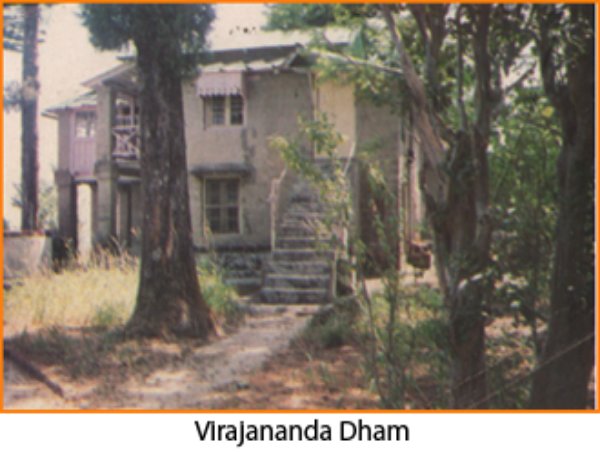
As said earlier swami Virajananda had purchased a bungalow in 1924 .It was a groud floor structure with three rooms. The first floor was added in 1940 and from that time onwards whenever Swami Virajananda would come to Shyamlatal he would stay on the first floor. His last visit to Shyamlatal was in 1950 and he left Shyamlatal on 3rd May 1950.
3. Virajananda Dham
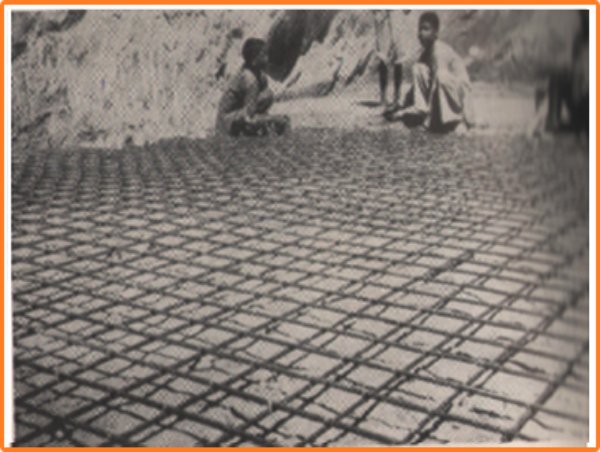
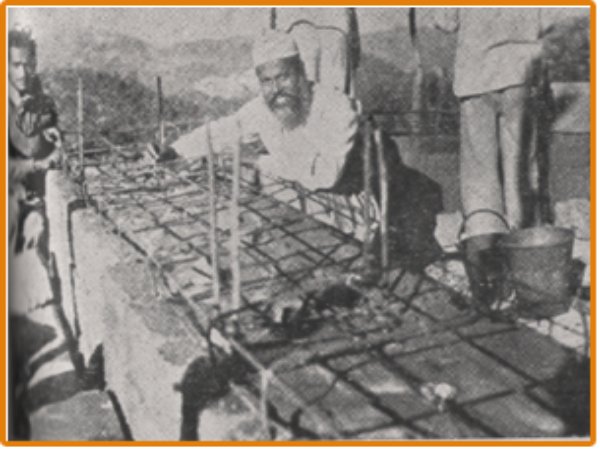
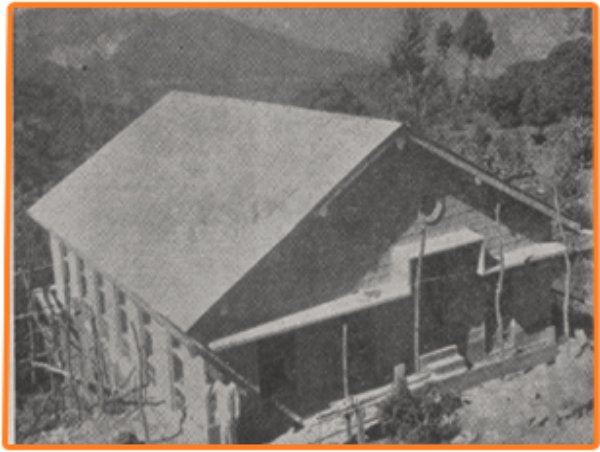
Sometime in 1952 during thetime of Swami Apurvananda a reservoir was constructed at a higher level in the mountain and water was collected into it from the natural source above, through 400 meter pipe line. However this also proved inadequate for the growing activities and in 1970 a large reservoir was constructed with a storage capacity of six lakh liters of water at a total cost of one lakh rupees. It was named Virajananda Jaladhar.
5. Agriculture and Horticulture
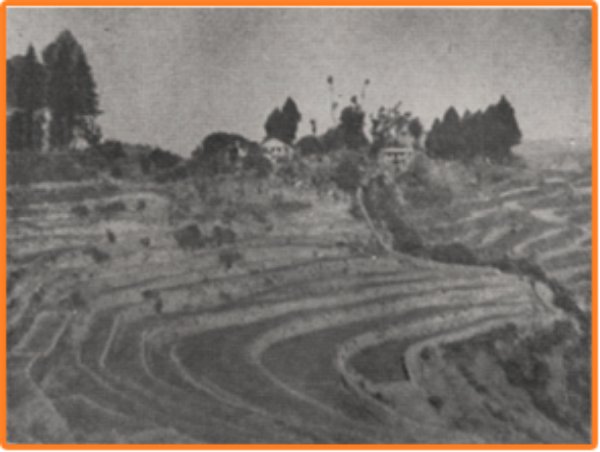
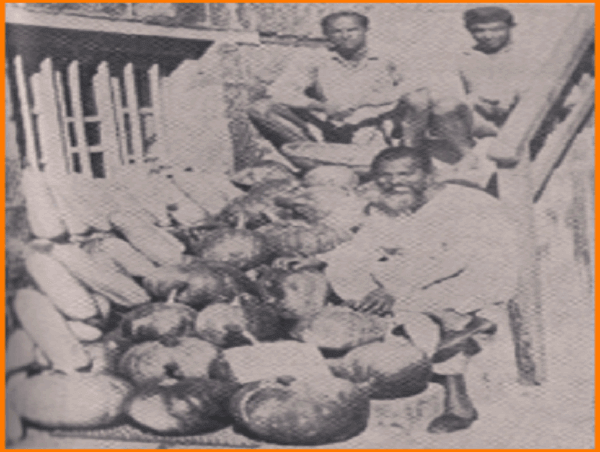
Subsequently numbers of storage tanks were built at different places for irrigation of, gardens and orchards scattered over an area of more than 30 acres. This enabled the Ashrama to provide employment to the local people and also opportunity for them to learn improved methods of cultivation.
6. Orchard and flower garden
Fruits and flowers were very dear to Swami Virajananda. Gardening was his hobby. He planted saplings of various fruits like mango, walnut, apple, pear tec. And flower plants of magnolia gradiflora, karabi, rose etc. These bear his hallowed memory. Since then the orchard was progressively enlarged with addition of orange, lichi, guava, lemon, peach and plum trees. This also provided opportunity for the local people to have education in cultivation and also the employment. The flower garden had 250 varieties of dahlia the number being the highest in any one place in India, and nearly 100 varieties of gladioli, 250 varieties of rose, and many more flowers
7. Apiary
Large varieties of flowers in the garden gave opportunity to set up an apiary on a fairly large scale.
This added income to the Ashrama. Further cross pollination by the bees resulted in improved production of agricultural products like, wheat, maize, paddy as well as vegetables.
8. Dairy farm
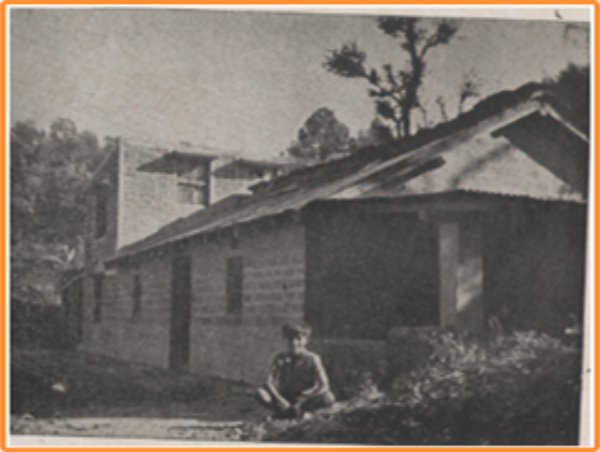
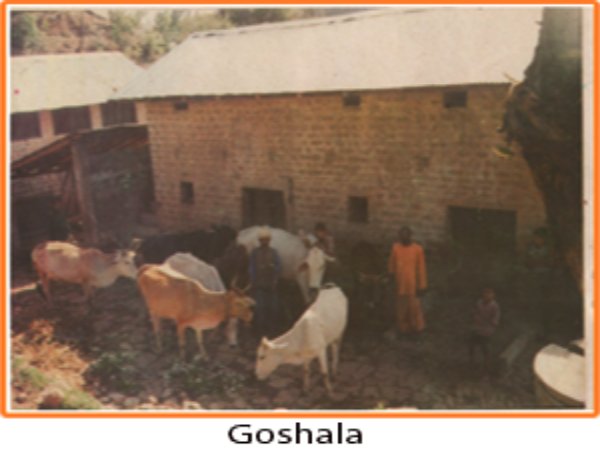
In order to train the local people in maintaining cattle in hygienic condition and also to generate employment opportunities the Ashram developed and maintains a dairy farm with number of cows and a bull
In order to train the local people in maintaining cattle in hygienic condition and also to generate employment opportunities the Ashram developed and maintains a dairy farm with number of cows and a bull
9. Library
The Ashrama developed and maintain a library containing religious books journals and periodicals.
9. Library

Ashrama continued its efforts in creating awareness of education among the villagers and accordingly built a primary school building near the lake. A school teacher was also appointed to ensure regular imparting of knowledge.
11. Accommodation
For the convenience of the devotees and sympathizers and the monks of the Order, the Ashrama enlargedit’s accommodation capacity.
12. Annual celebrations
Shyamlatal Ashrama in recent past.
Fighting with all difficulties, successive generation of monks have maintained the spirit of Ashrama Viz. intense meditative life coupled with service of god in man.
The dispensary has grown to into an ultra-modern medical unit with sophisticated diagnostic equipments. Presently it has facilities like X-ray, ECG, all types of blood testing, urine culture and dental unit. Apart from extractions, scaling, cosmetic remodeling of teeth; even root canal treatment facility is also available.
A remote monitoring system has been added very recently so that online consultation is obtained for the patients from the expert doctors located in distant cities.
No of patients attending the dispensary is 40-45 per day. Everything is free of cost. Not a single pai is charged from the patients.
The Ashrama has added a freevehicle facility for the patients. Two days in a week a vehicle carries patients from the main road and after imparting treatment they are sent back by the same vehicle.
For the patients undergoing elective surgeries, free operations are arranged at our Kankhal and Vrindavan hospital.
In a span of 90 kms, of area from Champawat to Tanakpur there is no medical facility. The situation has not changed in last 100 years. Vivekananda Ashrama has been the only source of medical help to the local people for the last 100 years and the Ashrama has rendered it consistently.
13. New Shrine.
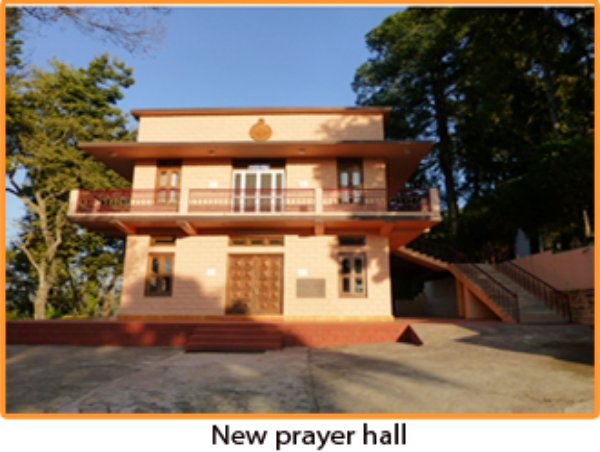
As mentioned earlier the old shrine was inside the main building of the monastery. Naturally the frequent visits of the visitors caused constant inconvenience to the resident monks. Further it was small in size.So a new building was constructed housing a large prayer hall on the first floor and the ground floor holds a library, book salesand a pictorial exhibition on thelife of Shri Ramakrishna, Sri Sarada Devi and Swami Vivekananda.
Integrated child development program.
As a part of 150th Birth anniversary of Swami Vivekananda an integrated child development program was conducted from 2010 to 2014 under financial support from government of India. Under this program physical mental moral and intellectual training was imparted to the children between 5 to 12 years of age. The Ashrama utilizing its own financial resources is continuing this program till today .
Water reservoirs and rain water harvesting.
Through the initiatives taken by the Ashrama a 60,000 liter water reservoir is constructed by the government on the top of the hill from where fresh drinking water is supplied to the villagers at their door step,covering the population in the area of 10 kms. A secondary storage reservoir of capacity of 30,000 liters is constructed in our Ashrama for the benefit of patients and visiting pilgrims. Three rain water harvesting reservoirs are also constructed to meet the agricultural needs
Vegetable cultivation in Poly houses
Because of menace of monkeys, nowadays it is not possible to grow any fruits or vegetables in the open land. Cultivation of vegetables is now doneto some extent inside poly houses. The Ashrama undertook a project of poly house cultivation with financial assistance from Department of Science & Technology,DRDO New Delhi – 110016 , and distributed the polyhouses to the villagers, encouraging them to become self-reliant.
Guest house accommodation and visitors
The intense spiritual practices of Swami Virajanandaji Maharaj has made the Shyamlatal ashrama a spiritual retreat center .The holy atmosphere of the ashrama attracts many monks and the devotees who visit the ashrama to spend time in spiritual practices and thereby deriving inspiration and benefit from their stay. History of Shyamlatal is thus a history of demonstration how work and meditation can go together. Consistency of it is the outcome of dedication of the monks and the organized nature of mission.
